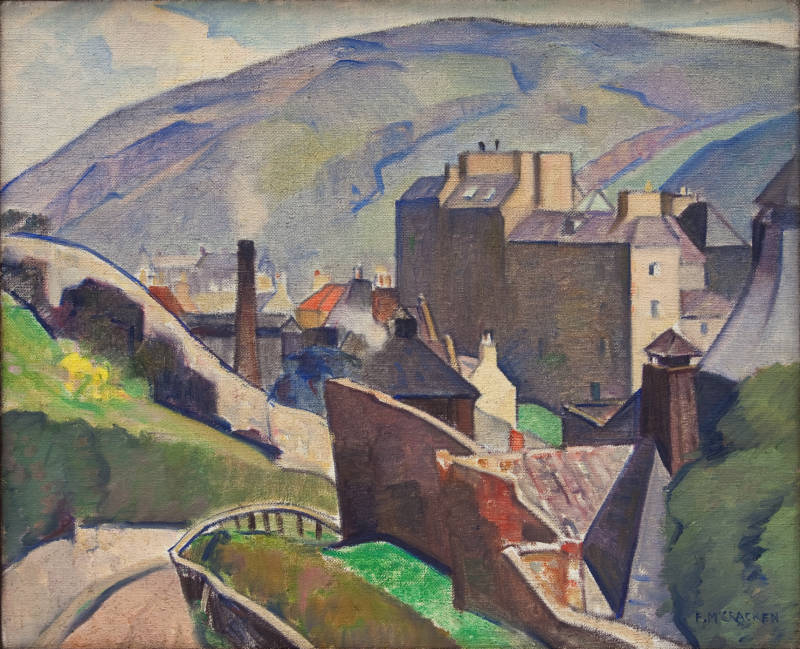Born in Northern Ireland, Francis McCracken spent his early years living on a cattle station in Australia. After his family moved to Aotearoa, he studied at Elam School of Art under Edward Friström. In 1914, he fought in France with the New Zealand Expeditionary Force, losing a leg at Ypres and being invalided out of the army. He then studied in Edinburgh at the Royal Scottish Academy, where he gained among other awards a Carnegie Travelling Scholarship. This enabled him to go to Florence and Paris where he was influenced by Cubism in the school of André Lhote.
In his early years, he travelled widely in France, Spain, Algeria, and Tunisia. He spent the remainder of his life in Edinburgh, marrying and living an austere life, seldom leaving his studio, and dying there almost as a recluse. He periodically sent paintings back to New Zealand and some were included in the Centennial Exhibition of 1940. In 1960, the Royal Scottish Academy and the Arts Council of Scotland arranged a Memorial Retrospective Exhibition. He was a good friend of John Weeks, who also studied at Elam, in Edinburgh, and at Lhote’s in Paris, and with whom he travelled in North Africa.
McCracken’s work reflects the influence—in terms of its colourist freshness—of the painters known as the Scottish Boys, particularly Sam Peploe, and the formalist rigour associated with Cubism.



